The Merganser is actually a small group of ducks that researchers place in the taxonomic genus Mergus. These ducks have oddly narrow bills with serrated or ridged edges.
here are four different species of these ducks, the Common, Brazilian, Red-breasted, and Scaly-sided Merganser. These four species are the “typical” Mergansers. Read on to learn about the Merganser.
Description of the Merganser
The various Merganser species have different plumage, or feathers, but similar body and bill shapes. Their bodies are long, and they have long, narrow bills with a hook at the tip. Their bill is similar in appearance to a cormorant’s bill.
Some of the different plumage colors include white, black, grey, brown, tan, and more. Most of these birds are about two feet long, though each species varies in size.
Interesting Facts About the Merganser
These ducks are quite interesting creatures, with many unique traits and adaptations. Learn more about them below.
- Dropping Ducklings – Just like goldeneyes and wood ducks, some Mergansers nest in tree cavities high above the ground. When the ducklings hatch, they jump from the tree and tumble to the ground! Thankfully, they are quite resilient (and a little bouncy.)
- Stealing Seagulls – Lots of seabirds take advantage of the success of other animals, and these ducks often become the victim of this. Gulls will follow a duck as it fishes, then try to steal the duck’s catch before it can swallow it, instead of hunting for their own fish.
- Brood Parasite – Not to be outdone, Mergansers sometimes take advantage of other birds as well. Females will lay an egg or two in the nest of another female duck. The other duck hatches the duckling and raises it unknowingly.
Habitat of the Merganser
Mergansers prefer living in aquatic habitats with forests and woodlands nearby. This is because they need mature trees with cavities to nest in.
Some of the different habitats that they occupy include wetlands, swamps, lakes, ponds, rivers, streams, bays, estuaries, and more. Most species prefer hunting in shallow water, but when food is scarce they do forage for prey in deeper waters.
Distribution of the Merganser
Different species have different ranges and distributions. Some Mergansers live or migrate across an incredibly wide range while others only occupy a few isolated regions.
The Commons live throughout Europe, parts of Asia, and North America. Brazilians only live in Brazil. Scaly-sides live in the eastern portions of Asia. Finally, Red-breasts live in Europe, Asia, Greenland, and northern North America.
Diet of the Merganser
Most Mergansers are primarily piscivores, or fish-eaters. They feed on a variety of small aquatic creatures, including fish, insects, snails, frogs, shrimp, crabs, worms, and more.
Each species has its own unique diet, and even birds of the same species have different diets when they live in different regions. Seasonal changes can also impact what these birds eat as well.
Merganser and Human Interaction
Humans usually do not hunt these particular ducks, which can actually be beneficial to fish populations by weeding out the weakest individuals. However, human activity does impact their habitats through deforestation, urbanization, and pollution.
Because of this, some Merganser species face potential extinction. The IUCN lists the Common as Least Concern, the Red-breasted as Least Concern, the Scaly-sided as Endangered, and the Brazilian as Critically Endangered.
Domestication
Humans have not domesticated Mergansers in any way.
Does the Merganser Make a Good Pet
No, these birds do not make good pets. Though they are ducks, they are wild animals and do not enjoy human interaction. You have many different domestic duck breeds to choose from instead.
Merganser Care
Zoos keep some species of Mergansers in their care. Most live in large, aviary-style enclosures with a variety of different trees, shrubs, water features, and other bird species. T
he ducks have plenty of places to swim and forage, and zoos often provide them with nest boxes to lay their eggs in as well. Zookeepers vary their diet based on the species, providing anything from small fish and shrimp to pelleted duck diet.
Behavior of the Merganser
Merganser behavior varies slightly from species to species and season to season. Some species, like the Common, are quite social and live in flocks. Commons even nest close to one another, even though they do not interact socially during the breeding season.
Outside of the breeding season many of these ducks migrate, and they do so in large groups. Migration patterns vary by species.
Reproduction of the Merganser
These ducks breed with one partner per season, but a new partner each year. The males perform courtship dances and calls to attract a mate. Some species nest in tree cavities, others in dense vegetation or similarly protected areas.
Females lay an average of 9 or 10 eggs per clutch, and incubate them for about a month. It takes 2 months for the young to learn how to fly, and once they fledge they become fully independent.


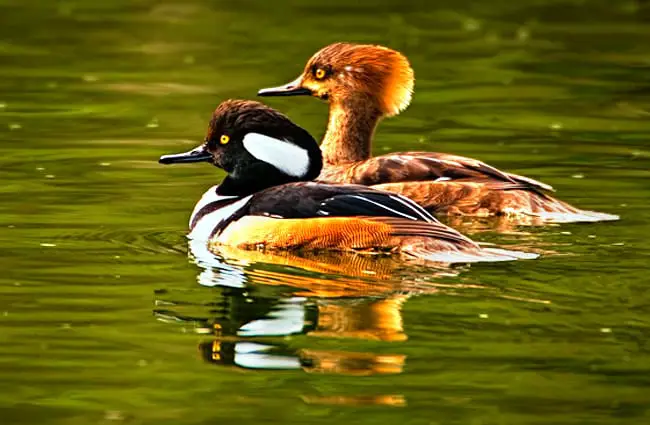
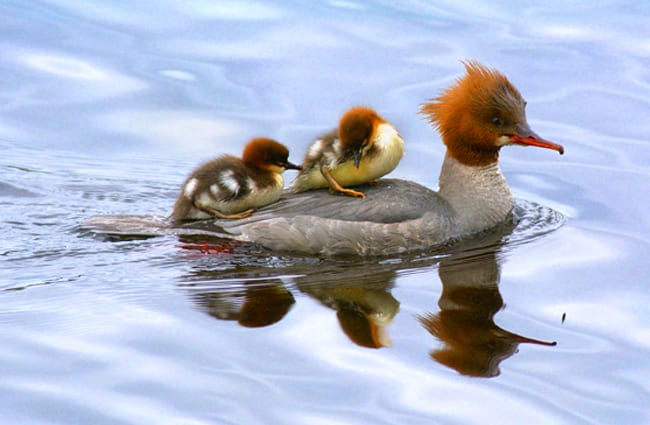
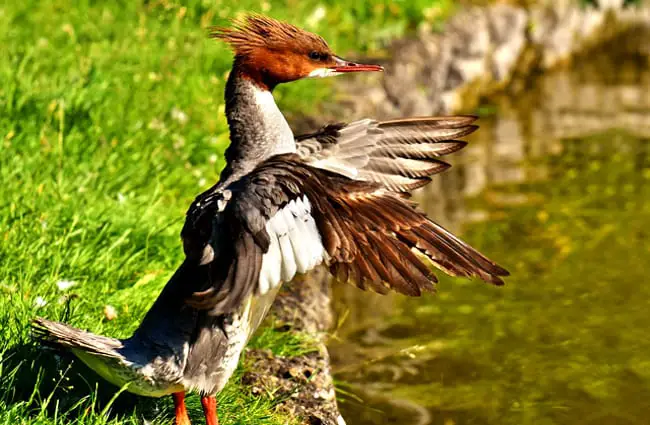
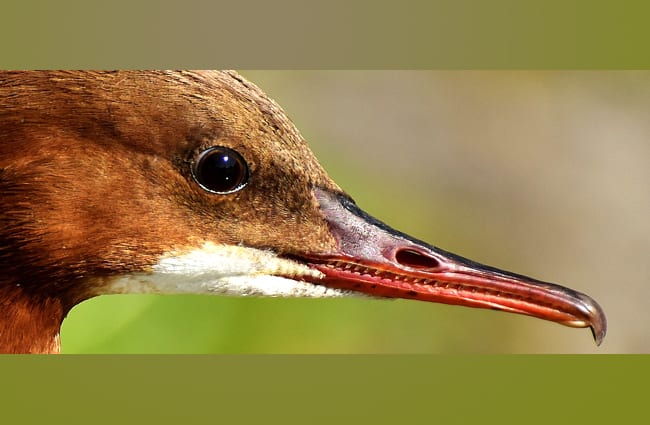
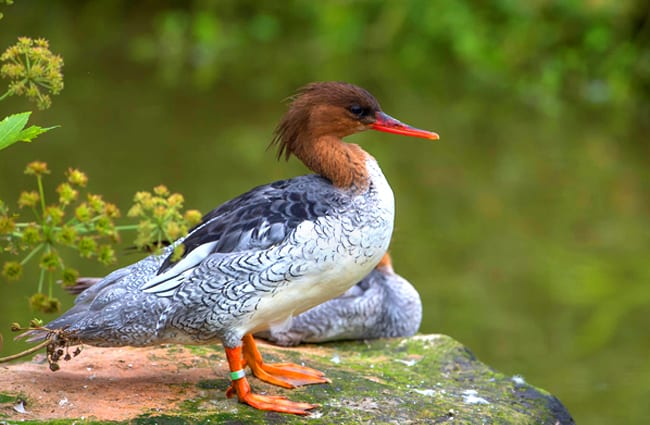
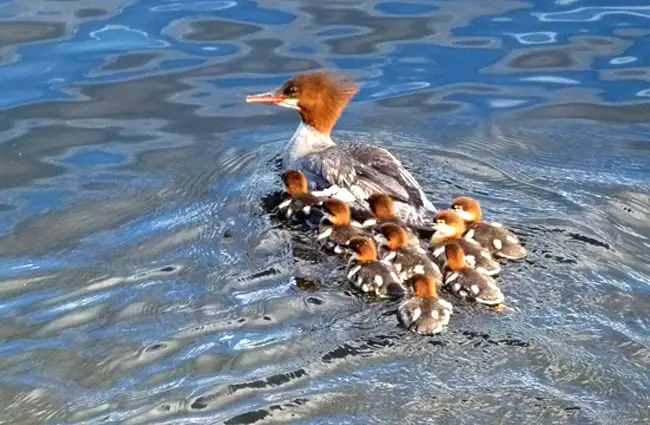


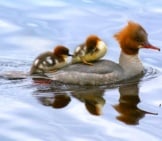
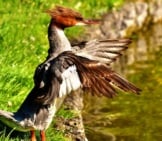
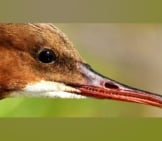

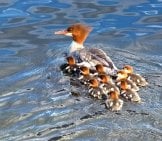
![Red Angus Closeup of a beautiful Red Angus cowPhoto by: U.S. Department of Agriculture [pubic domain]https://creativecommons.org/licenses/by/2.0/](https://animals.net/wp-content/uploads/2020/03/Red-Angus-4-238x178.jpg)












![Red Angus Closeup of a beautiful Red Angus cowPhoto by: U.S. Department of Agriculture [pubic domain]https://creativecommons.org/licenses/by/2.0/](https://animals.net/wp-content/uploads/2020/03/Red-Angus-4-100x75.jpg)

